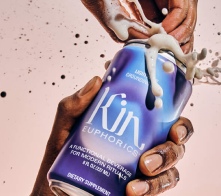Take a moment to think about the trillion of dollars — yes, trillion, with a “t” — that ecommerce businesses lose out on each and every year due to online shoppers abandoning their carts. (Don't worry, we have a solution coming for you in the form of abandoned cart subject lines.)
In June 2022, 88 percent of online shopping orders were abandoned, with the cruise industry having the highest cart abandonment rates at 98 percent.
Now that you’re having a panic attack (deep breaths), let’s talk about what you can do to eliminate a big chunk of that lost revenue. You can send them back to their cart to complete their purchases with an email marketing campaign using engaging abandoned cart subject lines.
Maybe you’re thinking, “My sales funnels are great.” And that might be true. But, with cart abandonment, you’re losing revenue from people leaving your site before they finish a purchase. So, start recovering some of that revenue with abandoned cart email campaigns. Why an email campaign? Well, abandoned cart emails are the No. 1 way to encourage shoppers to complete their purchases. No worries: We’ll walk you through all of the steps to crafting a winning subject line to bring them back to their carts.
In this guide, we’ll cover topics like:
- What is cart abandonment?
- Revenue numbers connected to cart abandonment
- Why do shoppers abandon their carts?
- How long should abandoned cart subject lines be
- How and why to test your subject lines for the best results
- 160+ examples of abandoned cart subject lines
Before we jump into some of the best techniques and practices, let’s make sure we’re all on the same page about what cart abandonment means.
What is cart abandonment?
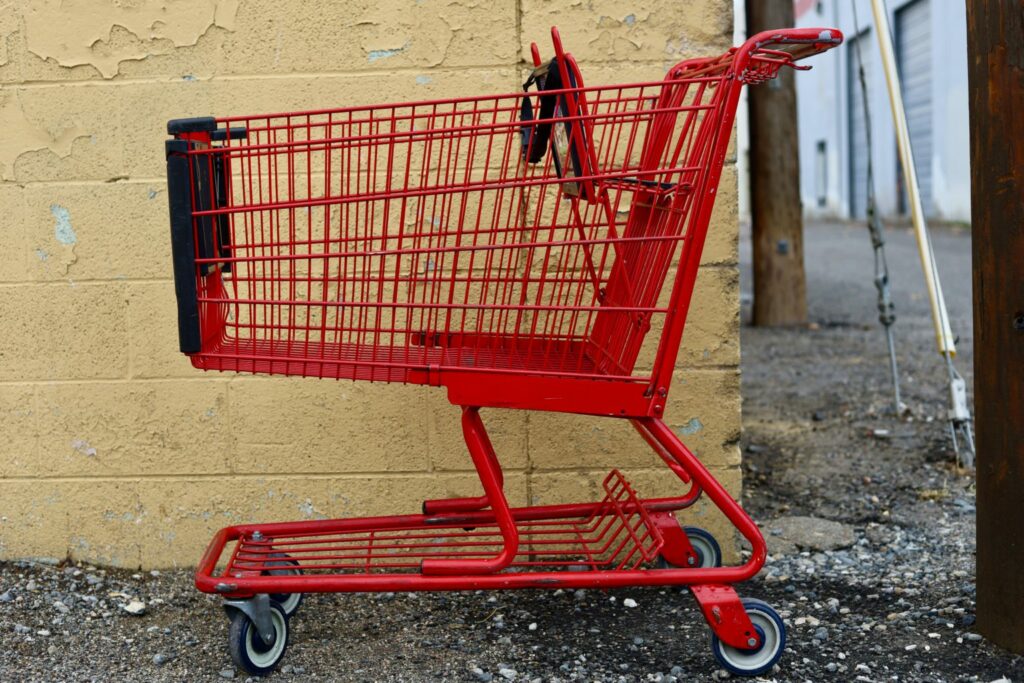
When an online shopper adds one or more of your e-commerce store’s products to their digital cart and then leaves without making a purchase, that’s cart abandonment. They obviously had enough interest in the item to add it to their cart, since that’s taking them one step closer to purchasing it. However, something prevented them from converting. So, your job is to find a way to get them back to their carts so they can complete the purchase — hence abandoned cart emails.
Just be sure you don’t confuse them with browse abandonment, which is a tad different. Browse abandonment is when an online shopper views a product and leaves your site before ever adding it to their cart. Those shoppers are one step behind a cart abandoner in the purchasing process.
So, let’s get back to the topic at hand (i.e. cart abandonment) and how to bring those shoppers back (i.e. email campaigns).
Numbers behind abandoned cart emails

Sure, earning engagement from your email campaigns is great. But, the real ticket is when you can earn revenue for each of the emails you sent. And that’s what you’ll be able to do with cart abandonment emails. Check out these averages for abandoned cart emails:
- Earn $5.81 in revenue per recipient
- Open rate of 41 percent
- Click-through rate of 10 percent
Businesses with an average order value (AOV) ranging from $100 to $500 recover an average of 4 to 5 percent of their abandoned carts. For basket sizes with less than $50, they capture around 3 percent of their abandons.
Abandoned cart emails are a powerful tool brands can use to convert shoppers who have expressed an interest in a product but haven’t yet finished their checkouts. If you aren’t emailing them, you’re leaving money on the table.
But for these email campaigns to work, they actually need to be opened. No subscriber is going to simply see your message pop up in their inbox and automatically go back to their cart, without ever opening the email to see what’s inside. That would be nice though, wouldn’t it?
And that’s where abandoned cart subject lines come into play. We’ll show you the components of successful subject lines, other best practices, and more than 160 examples of good subject lines you can use with your next campaign.
Why do shoppers abandon their carts?
To solve a problem, which in this case would be the abandoned carts, you first need to know what caused that issue. For you, the problem is that they didn’t convert. But for the shopper, the problem or reason they abandoned their cart could be a number of things. And to create abandoned cart subject lines that best engage your shoppers, you need to get to the root of the issue so you can provide a solution.
So why do shoppers leave their carts before they complete their purchases? The exact answer will be as different as the shoppers themselves, but there are some common reasons this happens, according to Statista:
- Shipping costs too much: 63 percent
- Discount code doesn’t work: 46 percent
- Order takes forever to ship: 36 percent
- Have to re-enter credit card info: 30 percent
- Have to re-enter shipping info: 25 percent
Whatever the reason is for them abandoning their cart on your website, chances are, it isn’t because they are no longer interested in your brand’s products. A lot of these issues can, and should, be addressed proactively on the back-end.
With that information in hand, you can then shape your subject lines to address those issues. Because if that’s the reason they left, providing a solution could be the ticket to bringing them back. So by taking a proactive approach and staying persistent, you can use cart abandonment emails to convert shoppers, capture revenue that would have been lost otherwise, and build relationships with these customers.
Does that sound like a good plan? Then it’s time to start talking about some of the best practices around abandoned cart subject lines. And where better to start than with how long the subject line needs to be.
Best length for abandoned cart subject lines
When it comes to subject lines, shorter is better. That’s in large part because the majority of subscribers are viewing their emails on their mobile devices, which have smaller screens. So, while your subject line may fit perfectly on a desktop, you won’t have the same view on a phone or tablet.
For example, here’s what these three subject lines look like on a desktop:

Now, take a look at the same subject lines on a mobile device (iPhone X):
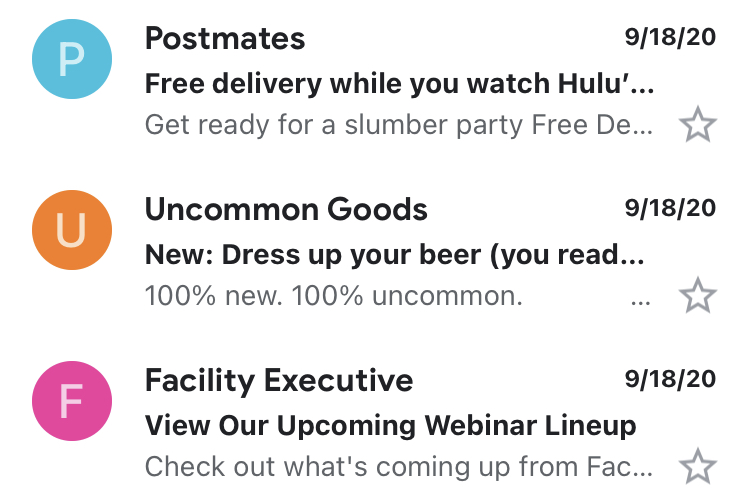
Pretty big difference, huh? Only one of the subject lines was seen in full on both a desktop and phone. And the screen of older phones would have shown even less of the subject lines.
Aim for a subject line that uses no more than nine words and 60 characters. But really, we’d recommend shooting for even shorter than that to ensure they can read the whole subject line, no matter where they are viewing their email. For example, “Come back to your cart,” is only five words and 22 characters and gets your point across.
Not short enough?
If you’re having trouble shortening your subject line because you’re worried you aren’t packing enough information into the limited number of characters, there’s a solution. You can include more information in your preview text. Sure, it may be cut off, depending on the length and the device the shopper is viewing it on. But, it’s another way to give them additional information, without stuffing everything inside of your subject line.
And if you’re still worried you can’t trim your subject line and fit everything you want to say, you can make sure the most compelling parts of the message are toward the beginning. That way, the shopper can still get the main point of the email, even if the subject line is cut off. Though, we would still suggest making it as short as possible.
Of course, the best length for your abandoned cart subject lines will depend on your specific audience.
Make abandoned cart subject lines visually appealing
We’ve all seen an email subject line like this in our inboxes:
- +++TODAY ONLY+++25% OFF!!!!
If it caught your eye, it’s for all of the wrong reasons. It’s a visual eyesore, to say the least. And at worst, it comes across like spam. You don’t want to come across like you’re yelling at your customers or aren’t professional. Plus, what’s up with the “+” signs? This isn’t a math equation.
Maybe the worst part is that this subject line leaves the reader wondering: “If this is what the subject line looks like, what on earth will the email look like?” We’re guessing they don’t want to find out, which means no open — and no heading back to their cart.
So, where does this email go wrong, and how can you avoid making these same types of mistakes? For starters, let’s all make a pact to never use random symbols in subject lines that don’t have anything to do with what you’re saying.
With that out of the way, the next thing you can do to ensure your subject line is visually appealing is to not put the whole thing in all caps.
And while exclamation points can convey a sense of urgency and aren’t all bad in subject lines, you shouldn’t use multiple ones in a row. They’re fine, even good sometimes, in moderation.
Take these findings: A subject line with a single exclamation point had about a 1 percent boost in open rates. However, subject lines with more than one exclamation point caused open rates to drop about 6 percent.
Having too many exclamation points can also trigger spam filters and hurt your email deliverability. So, stick with one or none exclamation points in your subject lines.
And if you want to see what an acceptable version of the above subject line would look like, try this instead:
- Take 25% off your purchase. Today only!
This subject line — unlike the first one — properly communicates a sense of urgency and excitement.
Perform A/B testing on abandoned cart subject lines
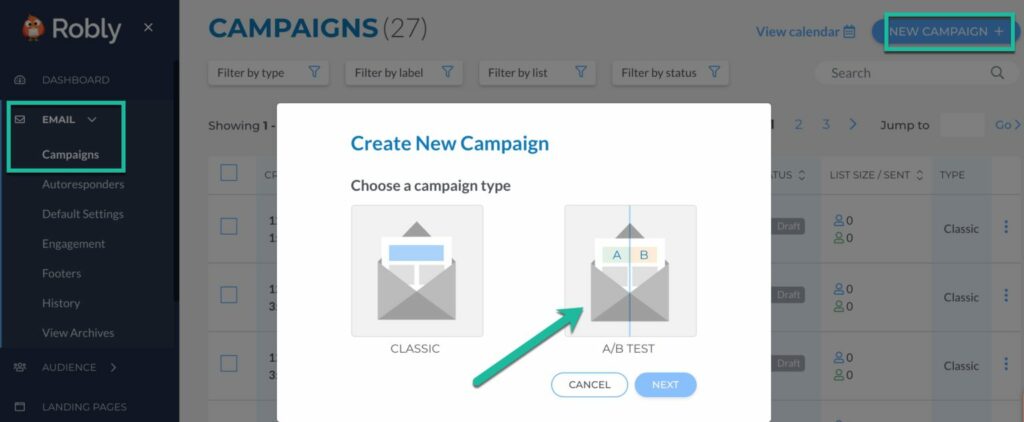
The best way to see if your subject line is performing well is to try out different versions using A/B testing. Your ESP should give you the capabilities to test different components of your email marketing campaign to see what is and isn’t working so you can create the most engaging campaign for your audience.
There are several different factors you can try out with your subject line testing. You can try completely different subject line approaches: “Did you forget something” or “Hurry before your cart expires!” Or, you can try out different subject line lengths, the use of emojis, or asking a question vs. making a statement.
You can also play around with capitalizing the text: “Come back to your cart” vs. “Come Back to Your Cart.”
A/B test these abandoned cart subject lines
- Come back to your cart
- Come Back to Your Cart
- come back to your cart
- Come back to your cart!
- Come back to your cart
Come back to your cart
- Come back to your cart (it’s amazing)
- Are you ready to come back to your cart?
As you can see, there are a variety of ways to change the look and feel of this short subject line. Once you find an approach that works, try it with future ones to get the most engagement.
The best way to figure out what will work best with your customers is to keep creating experiments to test your subject lines, and refine your messages based on the data you collect.
In addition to testing the subject line on your emails, you can also test how many emails you send and when you send the emails. A good rule to remember when trying to figure out how soon you will send the email after the abandoned cart action is that sooner is better. Emails sent within an hour of them leaving their carts have higher conversion rates than ones sent 24 or 72 hours later.
That’s in part because people forget things, like that they left a product in their cart. And the longer you wait to remind them about it, the more time they have to find what they’re searching for on another brand’s site.
Know who you’re emailing
We’ll talk more about personalization below in the examples, but before that can happen, you need to know who you are emailing. Here are a few ways you can segment your email lists to send them relevant, personalized abandoned cart emails:
- Repeat vs first-time shoppers
- VIP customers
- Type of products
- Cart size (how many items in the cart)
- Cart value (the value of those items)
Properly segmenting your lists will allow you to deliver content with the highest value to your subscribers, which is always a good thing. Then, you can tailor the subject line to best fit the specific segment the user falls in when they abandon their cart. Here’s a little more detail for each of these segmentation tactics.
Repeat vs. first-time shoppers
Repeat customers are what every brand strives to have. They are the ones that keep you going. You know they like your products already, so you don’t always need to send them a subject line with an offer right off of the bat. Save your discount emails until later in the abandoned cart email series. Instead, you could try offering free shipping or giving them rewards points toward their customer loyalty account.
First-timers, on the other hand, don’t have an established relationship with your brand yet, so you have to work a little harder (and differently) to bring them back to their carts. You can start off with discount subject lines and emails to incentivize them to head back to their carts. Examples like, “15% off your first order,” are a great way to catch the attention of new shoppers.
VIP customers
These are the shoppers you want to roll out the red carpet for. How a brand defines a VIP varies, but most likely, these are the customers who spend a significant amount of money with your brand.
So, when one of your VIPs leaves something pricey in their cart, don’t miss out on this special opportunity. You can offer them a special discount or exclusive access to something that’s relevant to them.
Type of products
If your brand sells a variety of products, try segmenting your messages by the type of products the shopper left in their cart. For example, if you sell pet items and a shopper adds dog food to their cart, keep your email relevant to dog food (not cat, bird, fish, etc.).
You can take that a step further by really honing in on what they added. So, if they added wet dog food, you could send them recommendations for other types of wet dog food — not dry food or treats.
Cart size
You would want to treat someone who has one item in their cart a little differently than someone who has a dozen they left behind. If they have several items in your cart, it could mean they are extremely interested in your brand. Or, it could also mean they’re unsure if the products are right for them or not.
If it’s the latter, you could help them out by including customer reviews, product star ratings, or other proof that shows it’s a quality product.
Cart value
Again, a shopper who has $50 worth of products in their cart isn’t the same as someone who has $200 worth of items — especially if your average customer order value is, say, $100. You could give this shopper something special like a free gift with purchase, free shipping, or a discount. And remember to let them know about all of those goodies in the subject line.
Examples of abandoned cart subject lines
With some best practices out of the way, it’s time to start crafting abandoned cart subject lines that will make subscribers open your emails. Not sure where to start? Don’t worry: We have you more than covered.
We’ve broken up the abandoned cart subject lines into different approach categories, but of course, some of them could easily land in multiple categories. Feel free to copy and paste these into your next campaign, personalize them for your brand, or simply get ideas from this extensive list.
Popular and effective
No two brands are the same, but their subject lines may be. The reason you see so many brands sending similar — or exact — subject lines is because these are proven winners. So, here are a few basic examples you might see on a variety of brands’ emails.
- Heading out without checking out?
- Ready to buy? Complete your order now
- Come back to complete your checkout
- Come back to see your [Product]
- Open for an update on your cart
- Cart Reserved!
- We reserved your cart for you
- Your cart called. It wants you back.
- We noticed you noticing something pretty great
The last two subject lines were ones Target used in their abandoned cart campaigns. Inside of the last email, the body text says: It’s an *add-to-cart* kind of day, with the CTA, “Shop now.”
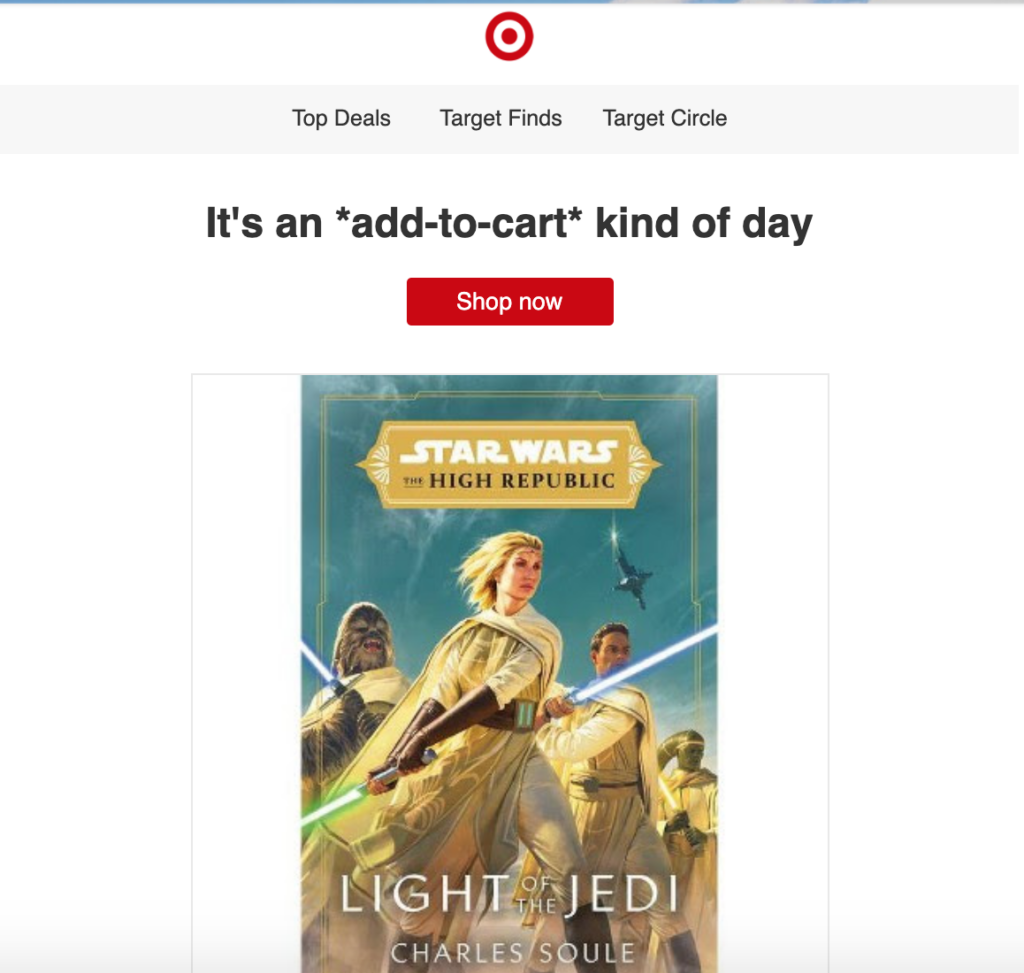
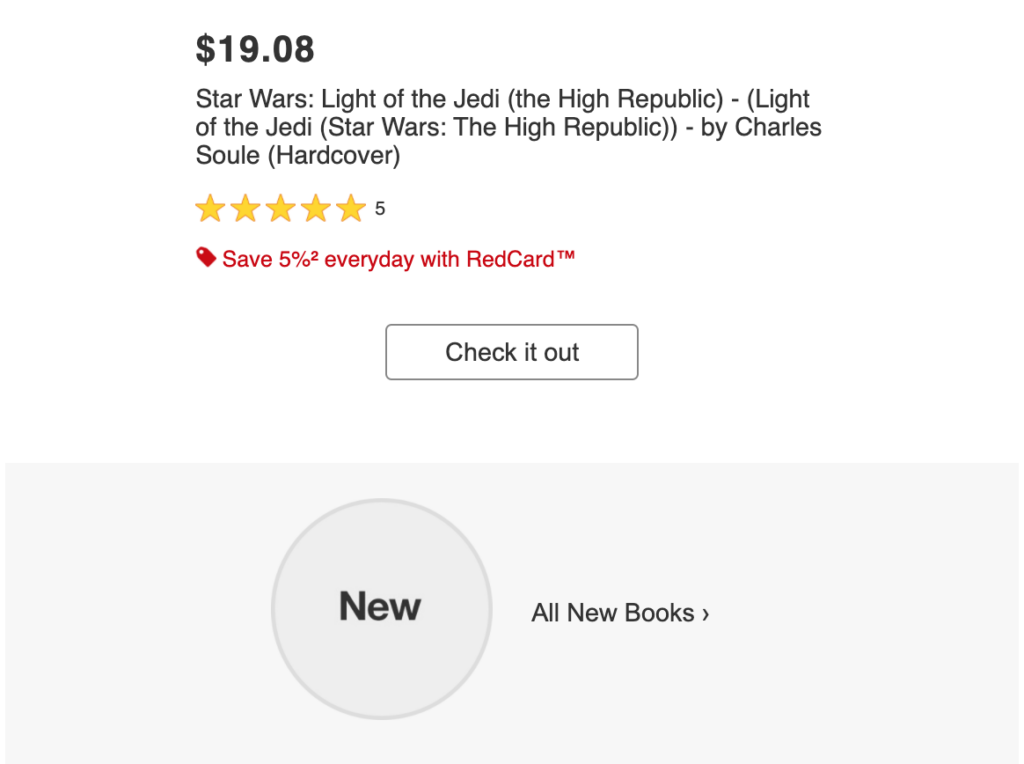
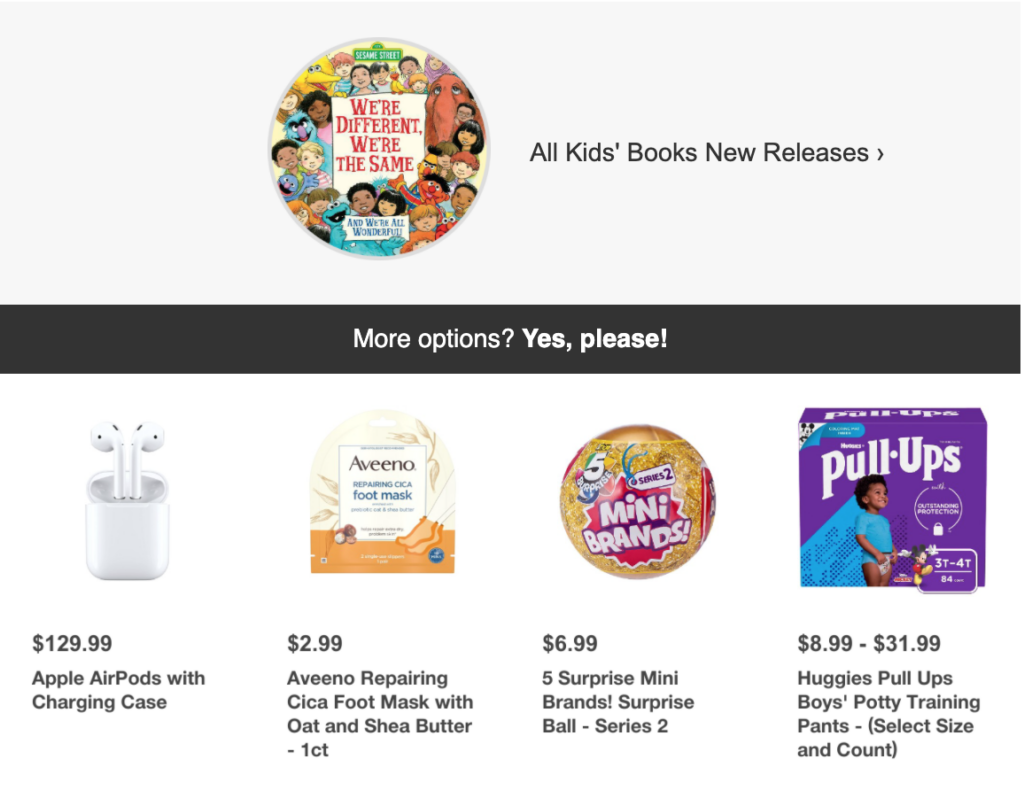
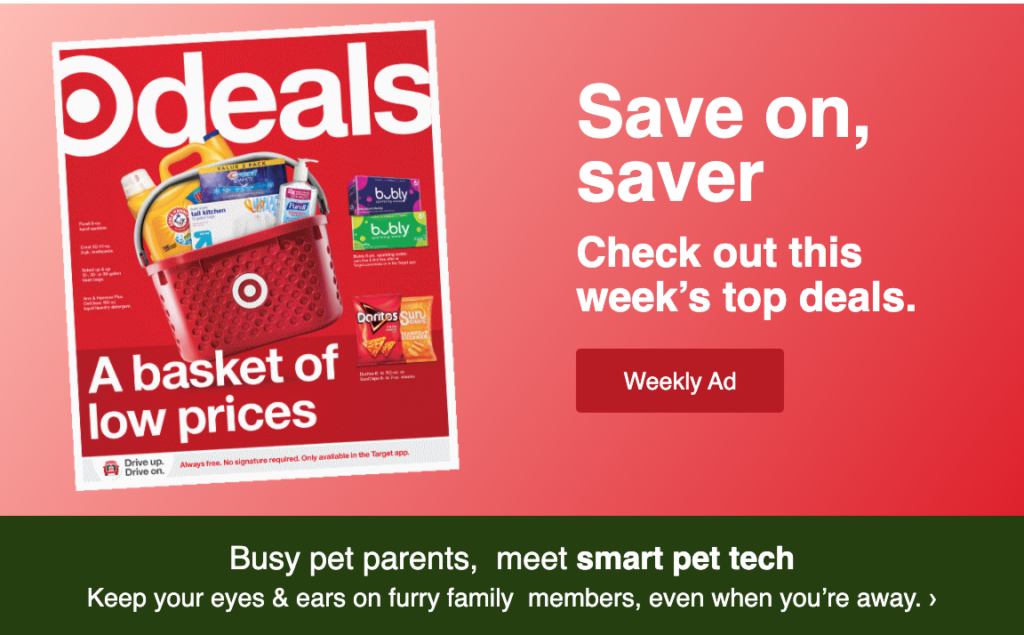
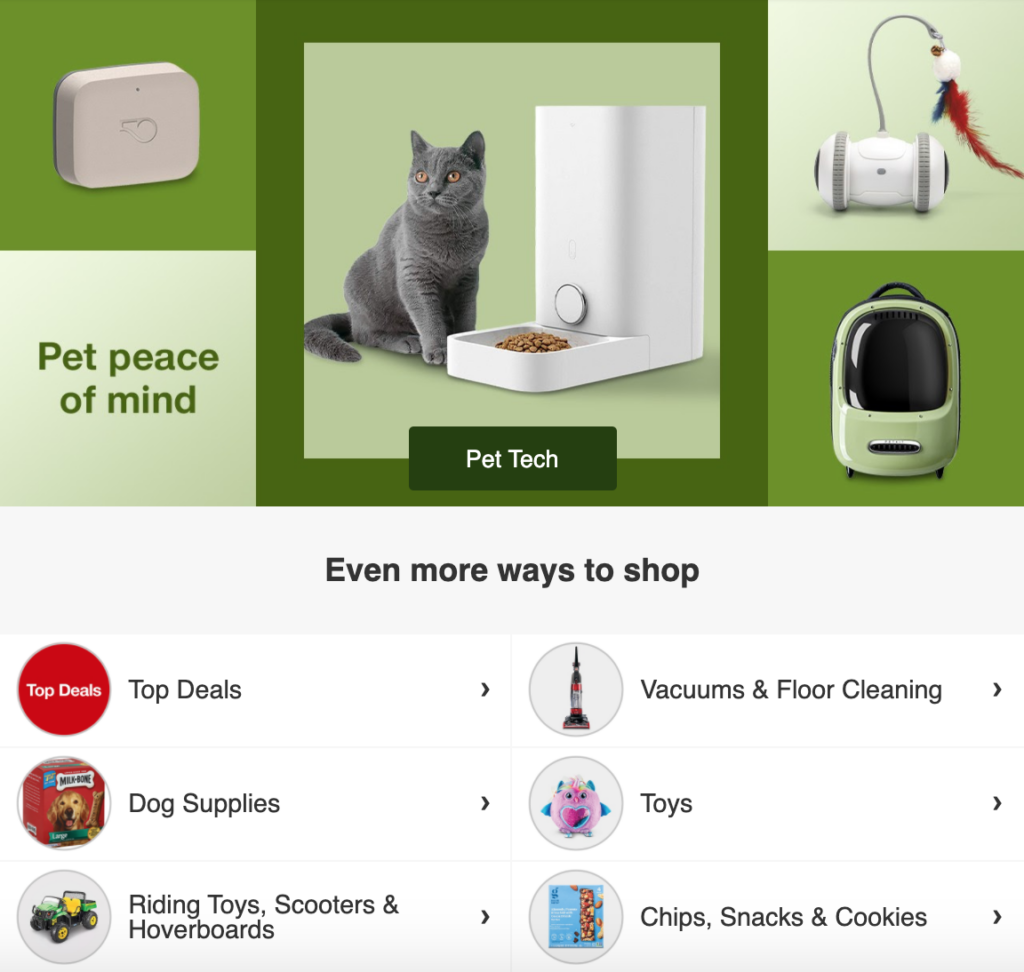
Forget something?
You know the answer to this question because you know exactly what the cart abandoner left behind. But for the shopper, it’s a playful way of reminding them there are items in their cart. And maybe they did simply forget to complete the purchase, so in that case, these subject lines would be especially effective.
Many of these could have ended up in the “Popular and effective” section because you have, no doubt, seen several of these subject lines in your inbox a time or 10.
These subject lines use the assumptive close, which concludes the shopper has made up their mind to buy the item(s) but was interrupted — not because of a factor like shipping costs, for example. With this approach, you’re simply reminding them that they didn’t quite complete the sale… yet. You can pose these as statements or questions.
Here are a few good words to use with this type of approach:
- Forgot
- Oops
- Forget
- Leave
- Left
And here are subject line examples putting this approach into action:
- Did you forget something?
- Forget something?
- Did you forget this?
- Forget to checkout?
- Have you forgotten something?
- Looks like you forgot something, complete your purchase
- Looks like you forgot something
- Oops, you forgot something
- Oops, you forgot [product]
- You left something behind.
- Open to see what you left behind
- Did you forget to checkout?
- You forgot something in your cart
- A simple reminder…
- Reminder: You have items in your cart
- There are still items in your cart
- There are still items left in your cart
- Oh no! You left something behind
- You’re so close!
- Still on your mind?
- Psst…It’s your cart here…Did you forget about me?
- It looks like you left something behind…
- We don’t want you to miss out!
- Your [Product] picks are going fast!
- Psst. You left something in your cart.
- Friendly reminder: There’s something in your cart.
- You left something in your cart
- Thanks for visiting. We noticed you left an item in your cart.
- Out of sight but still on your mind?
- Your cart was saved for you.
- Forgetting something? Come back to your [Product]
- Heading out without checking out?
- Ready to buy? Complete your order now?
Personal touch
We all want to feel important, instead of just being another name on a brand’s email list. Consumers no longer have to settle for impersonal, transactional businesses in today’s world. Now, they have more choices than ever before, allowing them to choose to shop with brands that are authentic and provide value.
To show online shoppers you know who they are (but not in a creepy way), care about their interests, and want to give them something of value, use a personalized approach with your subject line. A little personalization can go a long way toward developing relationships that will lead to long-term value for both your brand and the shopper.
In addition to using their first name and/or the product name or category, you can also use the word, “you,” to add personal touch.
A personalized subject line makes the subscriber feel like you’ve created the email specifically for them — and that’s a pretty nice feeling. That allows you to start establishing trust and building a relationship well beyond the abandoned cart email. (Hint: That’s the whole point.)
But beyond connecting with the subscriber, personalizing email subject lines can also lead to open rates as high as 50 percent. Personalized promotional emails can result in 29 percent higher open rates, as well. Plus, brands that personalize their emails saw an 18-percent increase in revenue.
Not sure how to add a touch of personalization to your abandoned cart subject lines? Take a look at some of these examples, and test out which ones work best with your audience.
- Did you forget this, [Name]?
- Did you forget something, [Name]?
- Still thinking it over, [Name]?
- Still deciding, [Name]?
- [Name], complete your purchase of [Product/Category]
- Free shipping offer for you
- Hey, [Name]: Your cart is expiring soon
- Hey, [Name], complete your purchase in [X] clicks
- [Name], did you leave this behind?
- You’re so close
- Complete your checkout in two steps
- Can I help you?
- Get your new favorite [Product/Category] before it’s gone!
- [Name], you forgot something
- Hey [Name]! You left something behind!
- Hey [Name], you forgot something
- Ready to complete your purchase, [Name]?
- A gift for you
- Your cart is ready for checkout
- [Name]: about the stuff you left behind…
That last example came from a DSW email. The text inside reads, “Hey [Name], you forgot your bag. Actually, you forgot the really good stuff that’s in your bag,” followed by a “Go to bag” CTA.
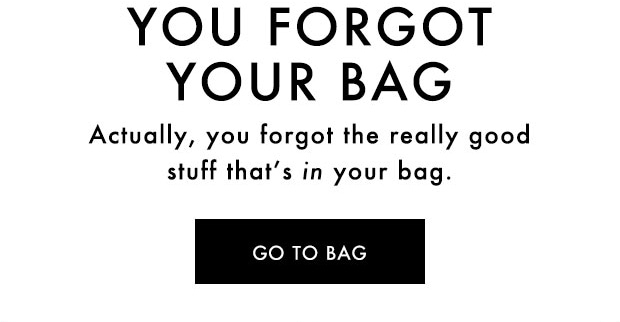
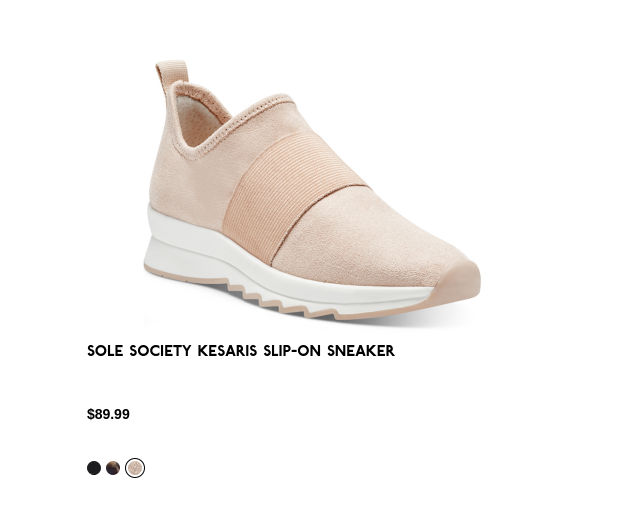


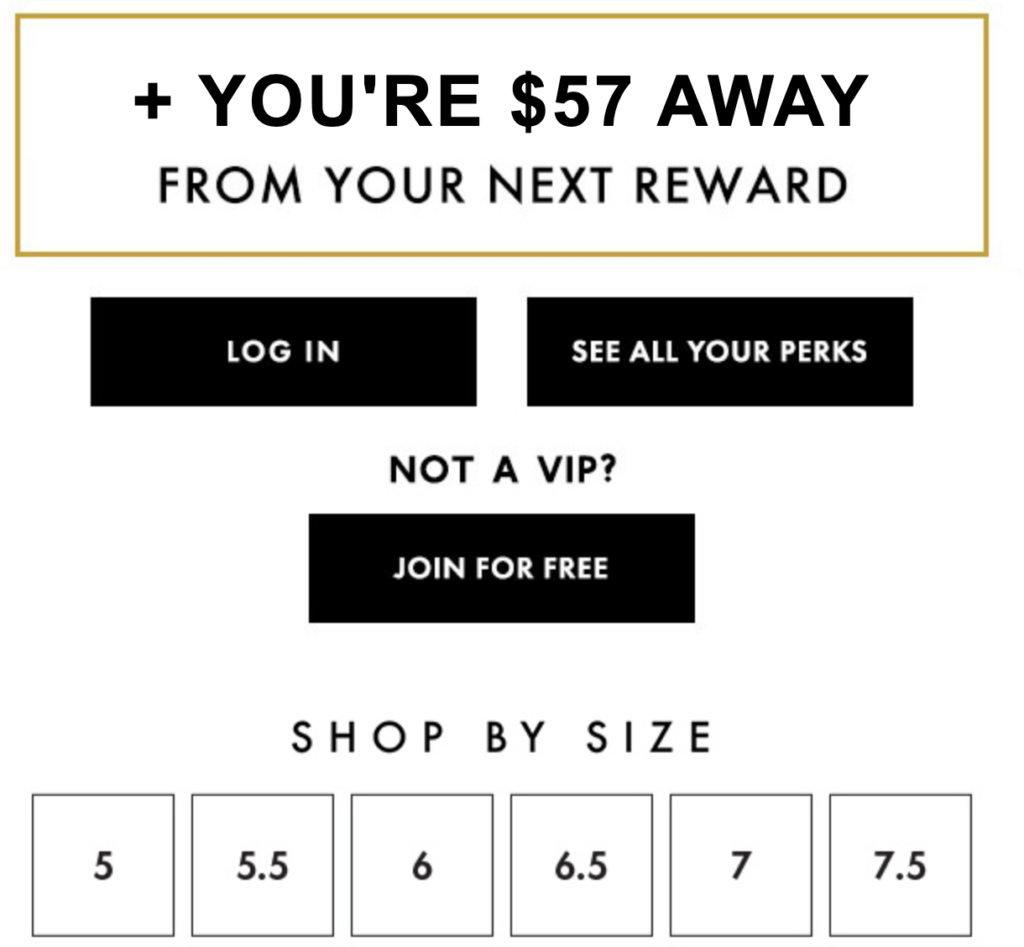
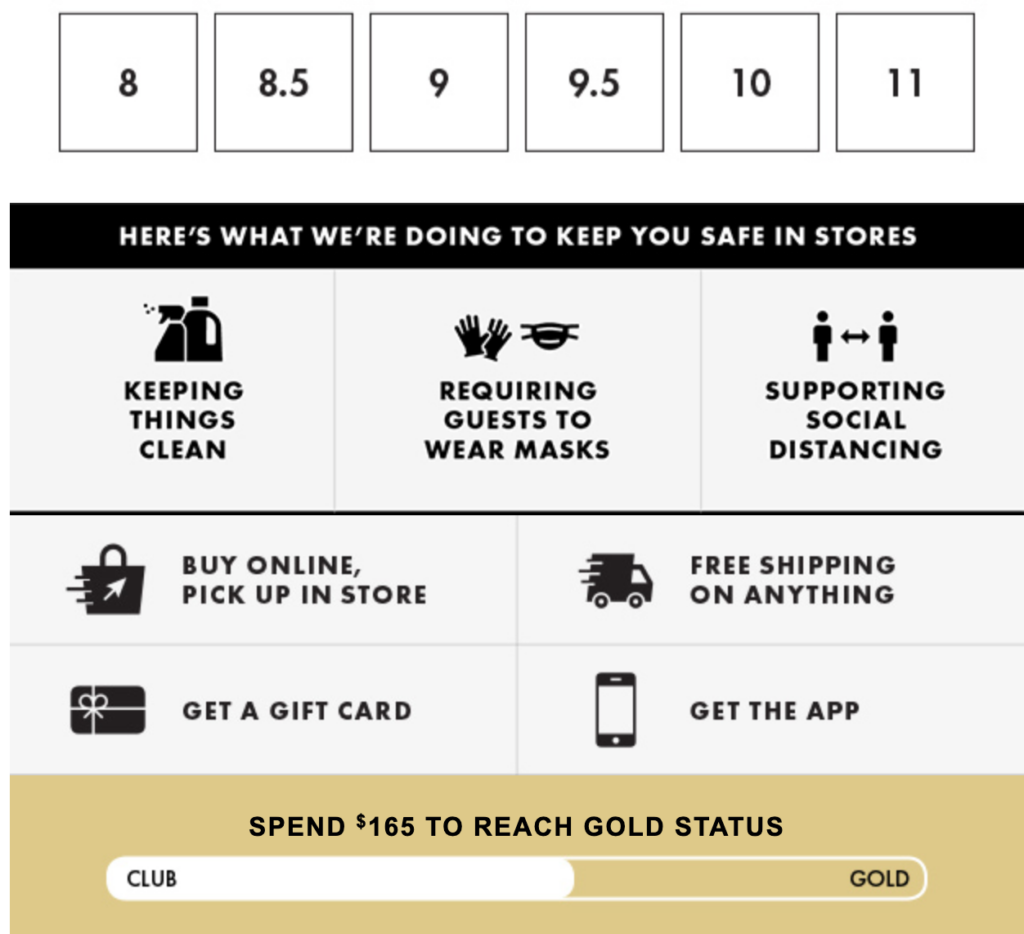
Remember: Make sure you use the correct merge tag for your ESP so that their names appear correctly. If you don’t have a first name for them on file, have your ESP plug in something like, “Hey there!” instead. Because if you don’t, you could end up sending them an email subject line that shows up like this in their inbox: [FNAME], you forgot something! And that’s way worse than having no personalization at all.
How can you find personalization information?
If the cart abandoner is logged in or you use cookies and already have their information on your email list, you’ll be able to pull that data and use it for your subject line and email. But, what if it’s an anonymous online user who leaves products in their cart? And since the majority of your web traffic probably is anonymous, you really don’t want to miss out on those shoppers.
Retention.com can identify up to 30 percent of your site’s anonymous U.S. site traffic. We share that information with you, allowing you to then create an email-based retargeting campaign (i.e. cart abandonment emails). Yes, it’s CAN-SPAM compliant. And yes, we get results.
So, if you want to be able to reach even more online shoppers who have abandoned their carts on your e-commerce site, give our service a try.
Rely on the product
Another way to personalize the email is by including the product name, such as “picture frame,” or the product category, like “home and decor.” It doesn’t have to be the exact product name, like “Medium red Gap sweater,” but even just saying “sweater” or “clothing” can work.
One reason adding the product to the subject line is so effective is because it personalizes the text, and it also reminds the shopper what product they left behind. That could lead to an, “Oh yea, I forgot to purchase that sweater I really liked,” moment. Here are a few examples of subject lines to help you achieve that:
- Your [product] is waiting for you
- Still interested in the [Product]?
- Complete your [Product] purchase
- Your [Product] is in your cart
- Your [Product] is almost ready to ship!
You can also personalize the abandoned cart subject lines to your brand like in these examples:
- Items in your basket at [Brand website]
- Finish your order at [Brand Name]
- Your [Product] is waiting in the [Brand Name] store
- Complete your [Brand Name] purchase
- Your [Brand Name] items are in your cart
This type of branded approach works best if you have a recognizable brand that conveys quality and trustworthiness. If your brand name isn’t as well known, that might not be the best approach to take with your subject lines.
Show urgency
No one wants to miss out on something great, which is why FOMO is such an amazing sales tactic. So, if you can create a sense of urgency in your abandoned cart subject lines, your shoppers will want to open the message to make sure they don’t miss out.
For example, if there’s a flash sale at a brick-and-mortar store, people will rush there because of the urgency and because they don’t want to miss out on it. In addition to the element of urgency, showing scarcity is another successful tactic with subject lines. So, mention things like limited availability and time sensitivity to encourage those opens (and sales).
You can do that by mentioning the number of hours/days left, that the product’s nearly sold out, or that this is their last chance to purchase their item. Basically, you want to give them a compelling enough reason to go back to their cart, without saying, “BUY NOW!”
Here are examples of those techniques in subject lines:
- The [Product] in your cart is going fast
- [Product] is selling fast: Complete your purchase now
- [Product/Category] is selling fast: Don’t miss out!
- Almost sold out!
- 48 hours left!
- Last day before it’s gone!
- Don’t miss out: Only [Number] [Product] left in stock
- Last chance
- Limited time only
- You left [Product] in your cart: Only [Number] left in stock
- Your cart expired
- Your cart expired — but we can help
- Your cart is expiring
- Your cart is waiting
- Get the items in your cart before they sell out!
- The items in your cart are going, going…
- Something in your cart has a promotion. Order now to get it by [Date/Holiday]
- Check out now to receive 15% off your order!
- Don’t miss out on these items!
- Your cart expires soon! Get your [Product] before they’re gone
- Complete your order now to save 15%!
- 15% off | We miss you… and so does your cart
- Hurry! Your cart is about to expire.
- Hurry! Your items are almost gone.
- Last chance to grab what you left in your cart!
- Cart expired - [items might still be available]
Address concerns
Maybe they loved the product in their cart — that is, until they saw your shipping costs, return policy, taxes, total costs, or some other element that was a major turnoff. Beside being upfront on your site about any costs that could deter shoppers, you can also address these concerns with your abandoned cart subject lines.
For example, if shipping costs are a concern, you could use your subject line to offer the shopper free shipping. Looking at your data, research, survey results, and other information to figure out exactly what the pain points are for your shoppers. Then, address those issues via your subject lines.
Conversely, you can also tell them what is right with your brand from the start so they know they don’t have to worry about having concerns. That could mean using the subject line to highlight the quality of your products, demonstrate how easy it is to shop on your site, how your brand and/or site are different (in a good way), and show it’s a brand they can trust.
- Need help making a decision?
- What can I help you with?
- Don’t miss out on free shipping
- Did someone say free shipping?
- Did someone say free shipping? (We did!)
- Two clicks away from your new [Product]
- Cart today, closet tomorrow
- Want free shipping and returns?
- Quality products made just for you
- [Name], get free shipping today with your purchase!
- Your first order ships free!
- Your next order ships free!
- Free shipping and returns? Check your cart
- [Product] might be the one - Shipping and returns are both free
- No more stress, only free shipping and returns
Offer them a deal
If price comparisons are something they are focused on, you can experiment with offering discounts to shoppers in the subject line. It can be easy to rely on giving customers discounts because they look so enticing. However, you don’t want all of your abandoned cart emails to include a discount because then it loses its value.
If it’s a first-time cart abandoner, maybe a discount is a great way to start off your abandoned cart series. Or, if you have a regular shopper, try the discount on the second or third email in the series. Play around with the emails to see what works best for your brand and customers.
These kinds of offers can be compelling and effective. Just be sure to use discounts strategically and not as the go-to, one-size-fits-all approach.
- Free shipping, just for you [Name]
- Save 15% when you complete your purchase
- 15% discount off of [Product]
- 15% off if you open now!
- Get free shipping on [Product] today
- Free shipping on your [Company] order
- We have $5 just for you!
- Here’s $5 on us
- Hey [Name], would 15% off help?
- See the new low price on something in your cart!
- The price dropped for something in your cart
- Hey, forget something? Here’s 15% off.
- Good news: Your price dropped!
- Price Drops
- Take 10% off your first purchase!
- Something in your cart has a promotion
- Empty your cart with 15% off
- Take 15% off your cart before it’s gone
- Take 15% off before your cart is gone
- [Brand Name] 15% off your entire order for 24 hours only
- [Name], continue shopping with a discount!
- Continue shopping with a discount
Creative side
There’s something warm and fuzzy about a truly creative subject line. Or, maybe that’s just us. But, we can guarantee you that if you can craft a subject line that encompasses your brand’s voice with a touch of creativity, you’ll be miles ahead of the other emails streaming for your subscribers’ attention.
Use that pun, add a dab of humor, and send the type of fun email you’d like to receive. Because don’t forget, your subscribers are just people like you. So if you and your team like, chances are, others will too.
- Your cart has abandonment issues
- Don’t get left in the dust (shoe brand)
- Your cart is about to run away (shoe brand)
- Your cart is sobering up (alcohol subscription business)
- Are you hangry yet? (food related)
- We still want to sleep with you (edgy linens)
- Uh oh, someone’s gonna have a case of the Mondays (coffee brand)
- We don’t want you to get lost (map, travel or location services)
- These deals are about to be sucked away (vacuum company)
- Keep your summer glow with free shipping! (beauty brand)
- Don’t be left in the dust. Scoop up 15% off items in your cart! (home brand)
- [Name], stay in style with the items in your cart! (fashion brand)
- [Name], tread well with your new sneakers (fitness brand)
- Getting hangry? Your snacks are in your cart. (food brand)
- Plant today, grow tomorrow with items in your cart (garden brand)
- Aloha [Name], we saved your cart for you! (Hawaii Coffee Company)
- Good News About Your Cart (Barnes & Noble)
The Barnes & Noble email that goes along with that subject line reads, “Check out what you left in your cart!” That’s followed by the product photo and the CTA, “View my cart.”


If you don’t convert after that email from Barnes & Noble, the next one in the series has the subject line, “Your Cart is Waiting.” The inside design of the email is the same, except the copy this time reads, “Did you forget what you left in your cart?” The same CTA, “View my cart,” is there, as well.

Finally, if neither of the first two emails worked, Barnes & Noble sent out a third email contender to win the shopper back. The subject line for this one was, “Open for an Update on Your Cart.” The email’s text read, “Last chance to grab what you left in your cart!” along with the same CTA as the other two emails. As the text suggested, this was the final abandoned cart email they sent following the abandoned cart action.
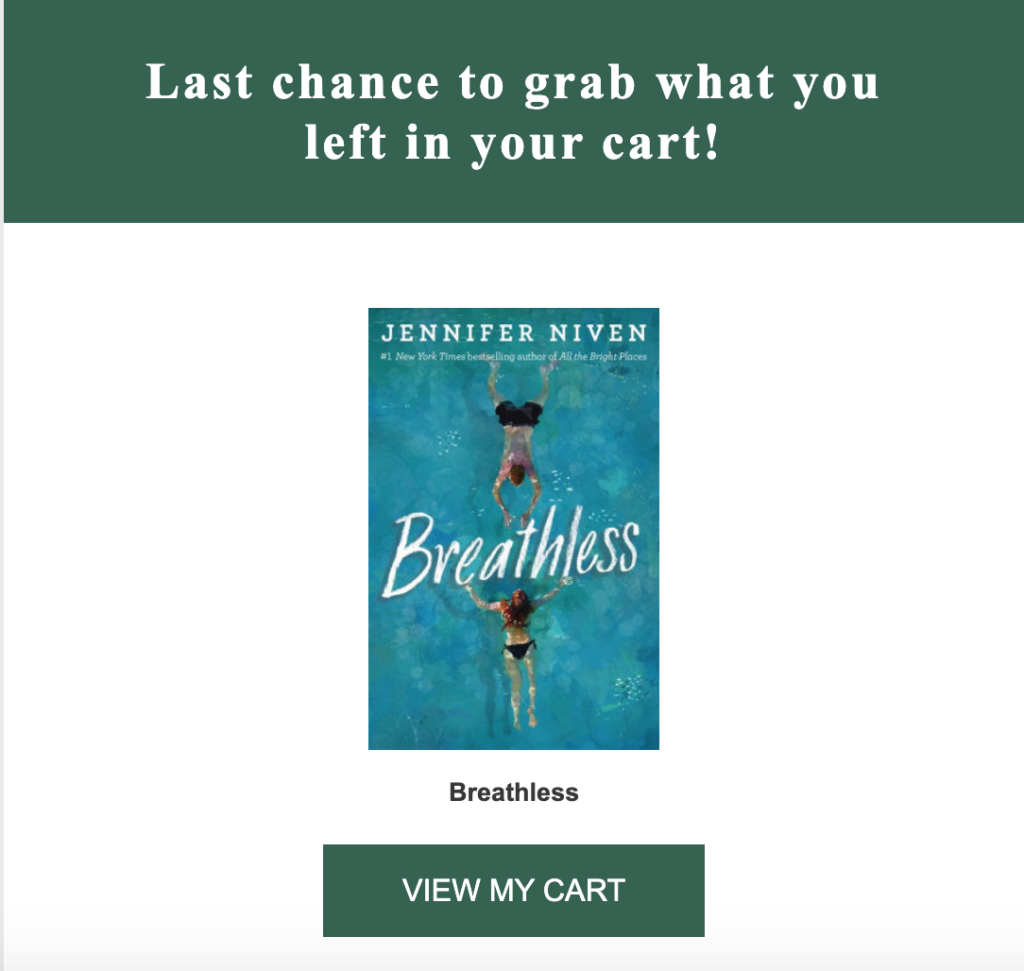
While they might not have actually wanted whatever was left in their cart, now you can try to convert them with other products or sales you have going on.
Never stop testing
If eyes are the window to your soul, does that make subject lines the window into your email? Or, have we had one too many coffees today? You tell us. Either way, we can’t overstate the importance of a great subject line, whether you’re sending an abandoned cart email or another type of email campaign.
There’s plenty of data out there showing abandoned cart emails work and help brands recover potentially lost sales. So, it’s crystal clear why every marketer should include an abandoned cart email series as part of their strategy.
You can try different approaches with the design, text, send times, and, of course, the subject lines. No matter which types of subject lines you decide to use, make sure you regularly test and refine them. What worked in the past might not work going forward, and vice versa. And what works for one brand might not work for yours.
So, try out these abandoned cart subject lines, see what works, nix what doesn’t, and create a plan that’s best for your brand. We hope these best practices and subject line examples give you inspiration and help you engage more of your online shoppers.
When you consistently test and optimize your emails, you will be able to drive the best results.
